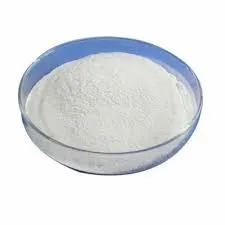
Dec . 04, 2024 14:20 Back to list
Exploring the Properties and Applications of HEC Cellulose in Various Industries
Exploring HEC Cellulose Properties, Applications, and Future Prospects
Hydroxyethyl cellulose (HEC) is a non-ionic, water-soluble polymer derived from natural cellulose. It belongs to a class of cellulose ethers and has gained widespread attention in various industries due to its unique physical and chemical properties. This article will delve into the characteristics, applications, and future potential of HEC cellulose.
Properties of HEC Cellulose
HEC cellulose is distinguished by its high viscosity and superior solubility in cold water, making it an attractive option for many formulations. It is produced through the etherification of cellulose with ethylene oxide, which introduces hydroxyethyl groups to the cellulose chains. This modification enhances the solubility of the polymer, allowing it to disperse easily in aqueous solutions. The ability of HEC to create stable, thick gels makes it a valuable ingredient in numerous applications.
One of the notable properties of HEC is its thickening and suspending abilities. Even at low concentrations, HEC can significantly increase the viscosity of solutions, making it useful for formulating products that require stable suspension of solid particles. Additionally, HEC exhibits excellent film-forming capabilities, which can be beneficial in applications where a protective barrier is needed. Moreover, HEC is compatible with a wide range of other substances, including surfactants, salts, and other polymers, further enhancing its versatility.
Applications of HEC Cellulose
Due to its distinctive properties, HEC cellulose is utilized across various industries, including cosmetics, pharmaceuticals, food, and construction.
1. Cosmetics and Personal Care HEC is a common ingredient in many cosmetic formulations, such as shampoos, conditioners, and creams. Its thickening properties help create a desirable texture, while its film-forming ability enhances the adherence of products to the skin or hair. Moreover, HEC acts as a moisturizing agent, helping to retain water in formulations, which is essential for skin hydration.
hec cellulose

2. Pharmaceuticals In the pharmaceutical sector, HEC is used as an excipient in drug formulations. It aids in the controlled release of active ingredients, improving bioavailability. Additionally, HEC's viscosity modification properties are exploited in the creation of gels and ointments, providing a smooth application.
3. Food Industry HEC is recognized as a food additive that acts as a thickening agent or stabilizer. Its use contributes to the texture and mouthfeel of various food products, including sauces, dressings, and dairy items. The safety profile of HEC, combined with its functional benefits, makes it a suitable choice for food applications.
4. Construction In the construction industry, HEC is added to cement and mortar mixtures. Its thickening properties help improve workability, allowing smoother application and reducing the risk of slump. Furthermore, HEC enhances the adhesion of tiles and plasters, contributing to more durable construction materials.
Future Prospects
The future of HEC cellulose looks promising, driven by ongoing research and innovation. With the increasing demand for sustainable and eco-friendly materials, HEC, being derived from natural cellulose, aligns with the growing trend towards biodegradable alternatives. Researchers are exploring new methods to enhance the properties of HEC further, such as modifying its molecular weight and degree of substitution to tailor its performance for specific applications.
Moreover, as the healthcare and cosmetics industries continue to evolve, the need for effective, safe, and sustainable ingredients will further propel the demand for HEC. The ongoing pursuit of multifunctional materials will likely open new avenues for HEC cellulose in various emerging sectors.
In conclusion, HEC cellulose is a versatile, water-soluble polymer with a broad range of applications due to its unique properties. Its significant role in cosmetics, pharmaceuticals, food, and construction highlights its functional benefits and growing importance. As industries embrace more sustainable practices and seek innovative solutions, HEC cellulose is poised to play an essential role in meeting these demands, paving the way for a sustainable future.
-
Versatile Hpmc Uses in Different Industries
NewsJun.19,2025
-
Redispersible Powder's Role in Enhancing Durability of Construction Products
NewsJun.19,2025
-
Hydroxyethyl Cellulose Applications Driving Green Industrial Processes
NewsJun.19,2025
-
Exploring Different Redispersible Polymer Powder
NewsJun.19,2025
-
Choosing the Right Mortar Bonding Agent
NewsJun.19,2025
-
Applications and Significance of China Hpmc in Modern Industries
NewsJun.19,2025







